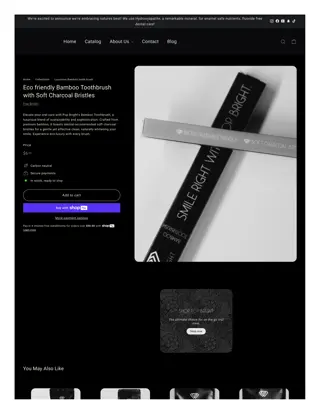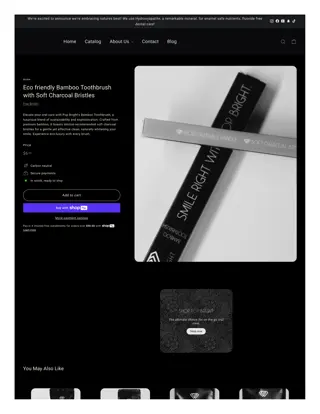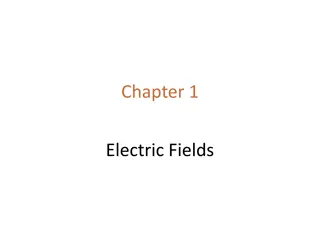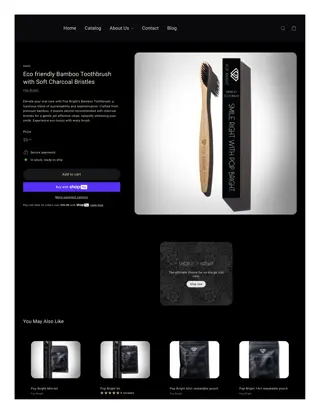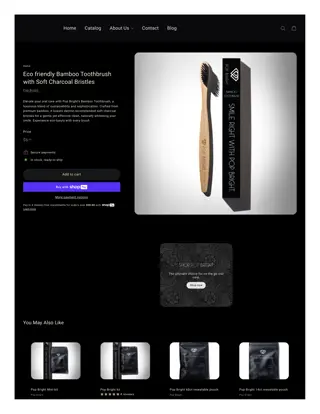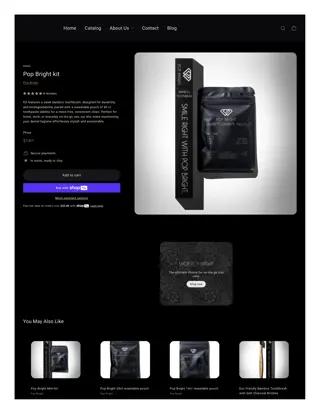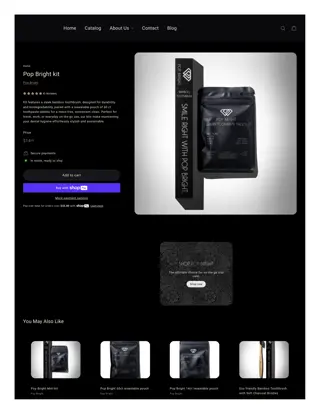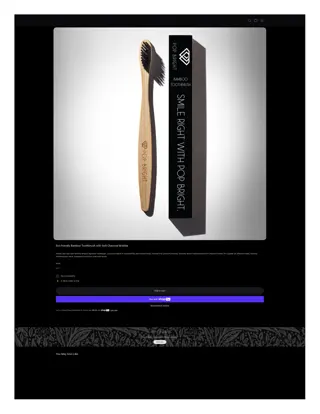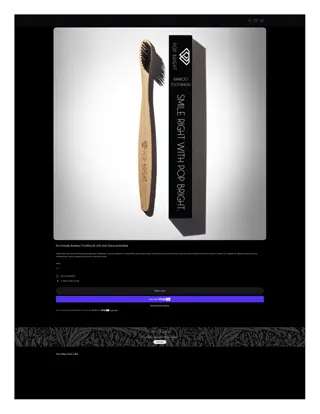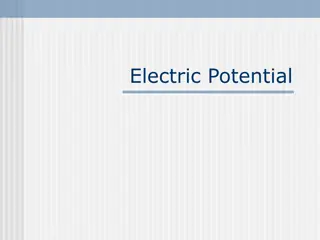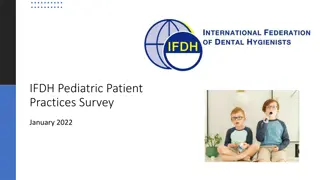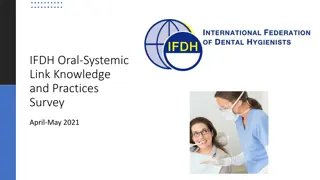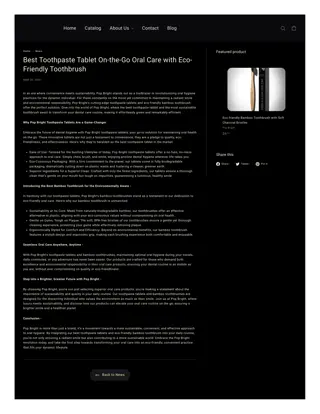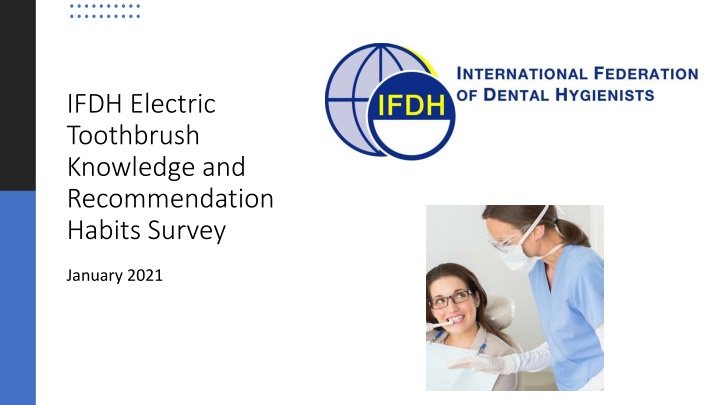
Global Survey on Electric Toothbrush Knowledge and Recommendations
Explore the results of a worldwide survey conducted to understand dental hygienists' knowledge and recommendation habits regarding electric toothbrushes. The survey gathered insights from over 4,000 respondents across 36 countries, revealing trends in years of experience, work settings, education levels, and the prevalence of electric toothbrush recommendations. Discover key findings and insights from this comprehensive study.
Download Presentation

Please find below an Image/Link to download the presentation.
The content on the website is provided AS IS for your information and personal use only. It may not be sold, licensed, or shared on other websites without obtaining consent from the author. If you encounter any issues during the download, it is possible that the publisher has removed the file from their server.
You are allowed to download the files provided on this website for personal or commercial use, subject to the condition that they are used lawfully. All files are the property of their respective owners.
The content on the website is provided AS IS for your information and personal use only. It may not be sold, licensed, or shared on other websites without obtaining consent from the author.
E N D
Presentation Transcript
IFDH Electric Toothbrush Knowledge and Recommendation Habits Survey January 2021
Electric toothbrush survey background Final of 3-survey series supported by Procter & Gamble Objective: To explore global dental hygienists knowledge and recommendation habits regarding electric toothbrushes Information used to guide future educational programs Survey flow: IFDH 31 member countries members
4,345 respondents from 36 countries Top 4 countries United States of America 72% Korea 5% Italy 4% Switzerland 3% Countries with 1-2% Israel, South Africa, Finland, New Zealand, Canada, Norway, Latvia, Australia, Portugal, Netherlands, Sweden, India, Malta Countries with < 1%: Spain, Ireland, Denmark, Russia, United Kingdom, Japan, Austria, Germany, Norway, Armenia, Bhutan, Colombia, Czech Republic, Liechtenstein, Lithuania, Nigeria, Philippines, Swaziland, United Arab Emirates
Years of experience > 25 years 35% 16 to 25 years 20% Balanced representation across categories 5 to 15 years 31% < 5 years 14%
Private Practice, General Dentistry 63.98% Work Setting Private Practice, Specialist 10.45% Community/Public Health 7.69% Majority in private practice, general dentistry Educational Setting 5.75% Corporate Practice 5.32% Hospital Clinic 4.% Other 2.81%
Bachelors Degree 38% Education Associate Degree 38% Master s Degree 9% 76% have a 2- or 4-year degree Diploma 7% Advanced Diploma 3% Certificate of Competence 2% Doctoral Degree in Science or Health 1% Doctoral Degree in Education 1%
Do you recommend electric toothbrushes? Do you recommend electric toothbrushes? Yes, often 79% 96% recommend electric toothbrushes Yes, sometimes 17% No 4% 0% 20% 40% 60% 80% 100%
Why dont you recommend electric toothbrushes? Why don t you recommend electric toothbrushes? I believe MT are just as effective as ET. 48% Among those who don t recommend, top 3 reasons are: I prefer MT because I believe they re gentler on soft tissue than ET. 36% I need more info about ET to feel comfortable recommending them. 23% 1. believe manual brushes (MT) are just as effective They re cost prohibitive for my patients. 12% 2. believe MT are gentler on soft tissues Most of my patients already use ET. 10% Our office policy does not allow me to recommend products. 10% 3. need more information Other 8% My patients don t like electric devices. 7% Recommending products hurts my professional credibility. 7% MT=manual toothbrushes; ET= electric toothbrushes
Which type of electric toothbrush do you recommend most? Which type of electric toothbrush do you recommend most? Sonic 50% Most popular electric brush type recommended: -Sonic -Oscillating-rotating Oscillating-rotating 36% Rotary 7% Other 5% Don't know 2%
To which type of patients do you recommend electric toothbrushes? (Check all that apply) All patients 58% Adults with consistent plaque build-up 48% Electric brushes recommended for most patient types, except young children Adults with gingival health issues 45% Patients with limited dexterity 45% Perio maintenance patients 43% Orthodontic patients 39% Elderly 38% Adolescents (10-18 years) 33% Caretakers 30% Implant patients 27% Children (6-9 years) 19% Young children (3-5 years) 7% Other 2%
To which type of patients would you NOT recommend electric toothbrushes? (Check all that apply) Few respondents would recommend against using an electric brush. None, an electric toothbrush would be appropriate for all patients 50% Post-surgical patients 27% Most common patients not to receive recommend are post- surgical and young children. Young children (age 3-5 years) 23% Aggressive brushers 8% Patients with erosive tooth wear 8% Patients with dentinal hypersensitivity 7% Adults with gingival recession 5% Children (age 6-9 years) 5% Other 4% Orthodontic patients 3% Implant patients 2% Adolescents (age 10-18 years) 2%
Which resources do you use to assist you in making clinical decisions for recommending ELECTRIC TOOTHBRUSHES to your patients? (check all that apply) My personal usage experience Feedback from my colleagues/peers Peer-reviewed journals (e.g., Int J Dent Hyg) Professional magazines (e.g., RDH, Access) Manufacturer s professional sales rep information Online patient education/instructional videos by industry Pamphlets supplied by manufacturers Manufacturer s product website Educational posters Textbooks Social media websites (e.g., Facebook groups) Other 83% 52% 52% 45% 35% 25% 22% 20% 11% 10% 10% 4% Common resources to make electric brush recommendation: - Personal usage - Peer feedback - Publications
Oral-B (Procter & Gamble) 78% Sonicare (Philips) 66% Most popular sales rep resources are from: 1. Oral-B 2. Sonicare Burst 2% WaterPik 3% Other 3% N=1474
What type of information do patients request regarding electric toothbrushes? (Check all that apply) Most common information patients seek about electric toothbrushes: How an electric toothbrush compares to a manual toothbrush The cost of the electric toothbrush Differences between types of electric toothbrushes How often to replace the brush head The cost of the electric toothbrush heads Electric toothbrushing instructions How an electric toothbrush works Tell-show-do method If an electric toothbrush is safe to use If the electric toothbrush handle can be shared with other family members How to clean an electric toothbrush How to use the App with the electric toothbrush None; my patients don't request information regarding electric toothbrushes. Other 72% 72% 69% 59% 47% 45% 40% 38% 36% 1. Comparison vs manual toothbrushes 2. Comparison vs other electric models 31% 3. Cost 17% 8% 2% 1%
As best as you can say, what percentage of your patients purchase an electric toothbrush after you recommend it? 40% 37% 35% 45% say more than half of patients act on recommendation to purchase an electric brush 29% 30% 25% 20% 16% 15% 11% 10% 7% 5% 0% Less than 25% 25% - 50% 51% - 75% More than 75% Unsure
Strongly agree Statement There is strong evidence that ET remove more plaque than MT. I prefer patients use an ET with a pressure sensor so they brush with the right amount of force. ET are beneficial for patients of all ages, from young children to elderly. My patients who use ET have noticeably better gingival health. There is strong evidence that ET reduce gingival bleeding more than MT. There is strong evidence that ET transition more patients to gingival health than MT. ET are just as gentle and safe as manual toothbrushes. There are differences in plaque removal effectiveness among the various types of ET. Smart toothbrushes with an App to track brushing time and behavior are valuable to help patients develop better brushing habits. 66% Most respondents agree: 65% - electric brushes (ET) provide better cleaning and gingival health benefits vs. manual 59% 57% - pressure sensor is valuable to control force 54% 54% - ET are safe, helpful to patients of all ages 53% 39% 19% MT=manual toothbrushes; ET= electric toothbrushes
Other IFDH Survey Results Click the links below to learn more about other IFDH surveys in this series: 2020 Covid Survey 2019 Toothpaste Survey The IFDH thanks Procter & Gamble for supporting these surveys.





